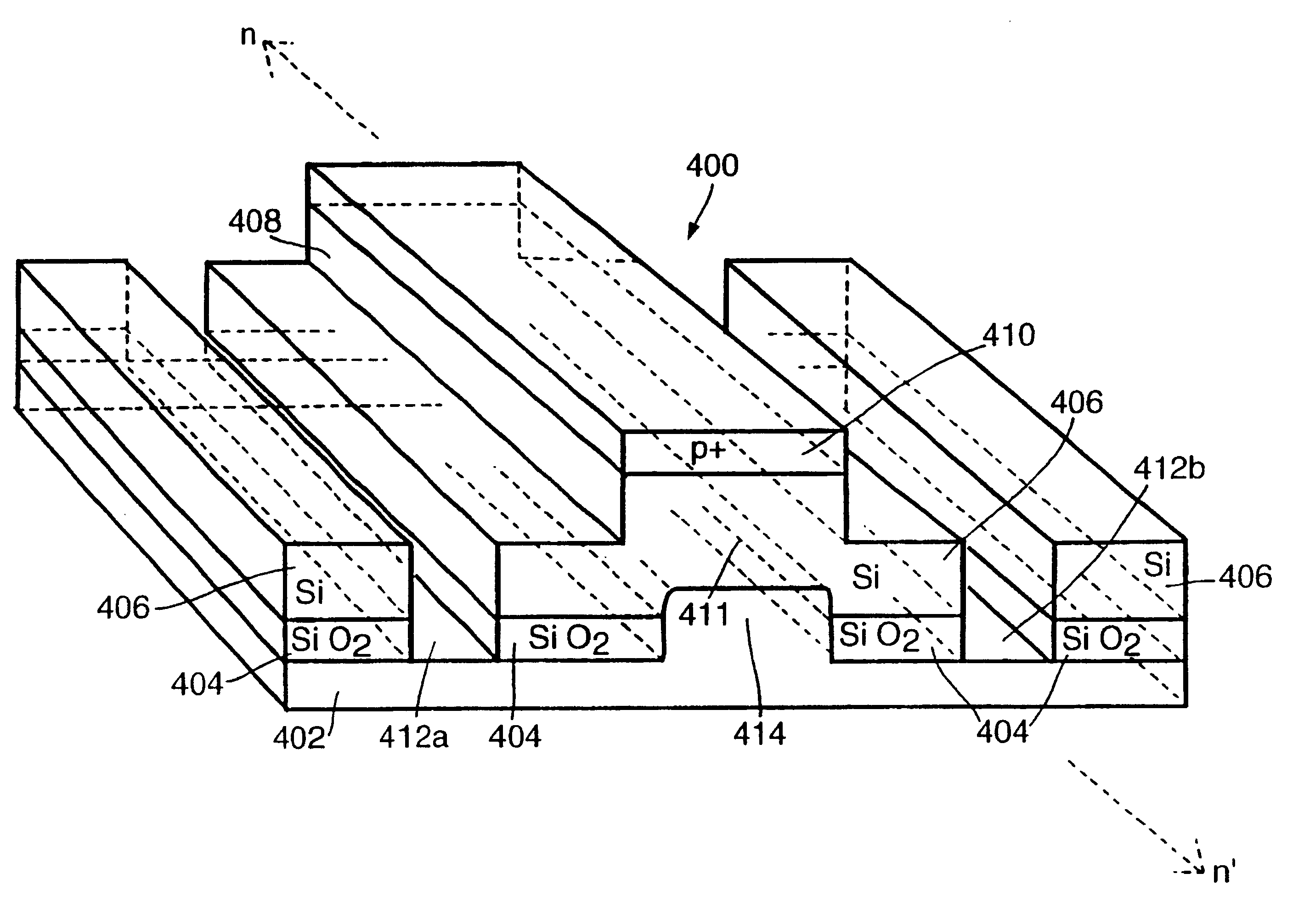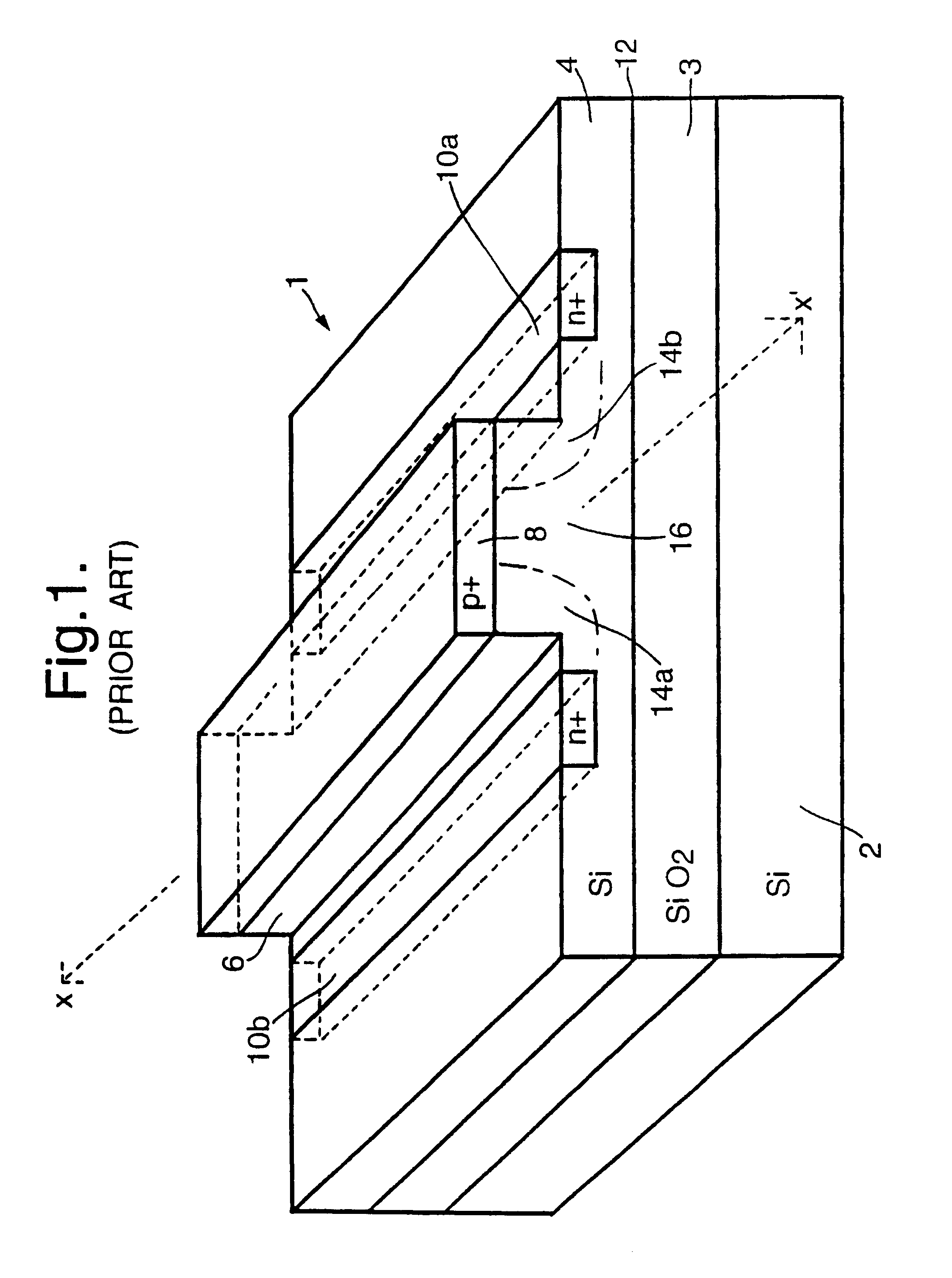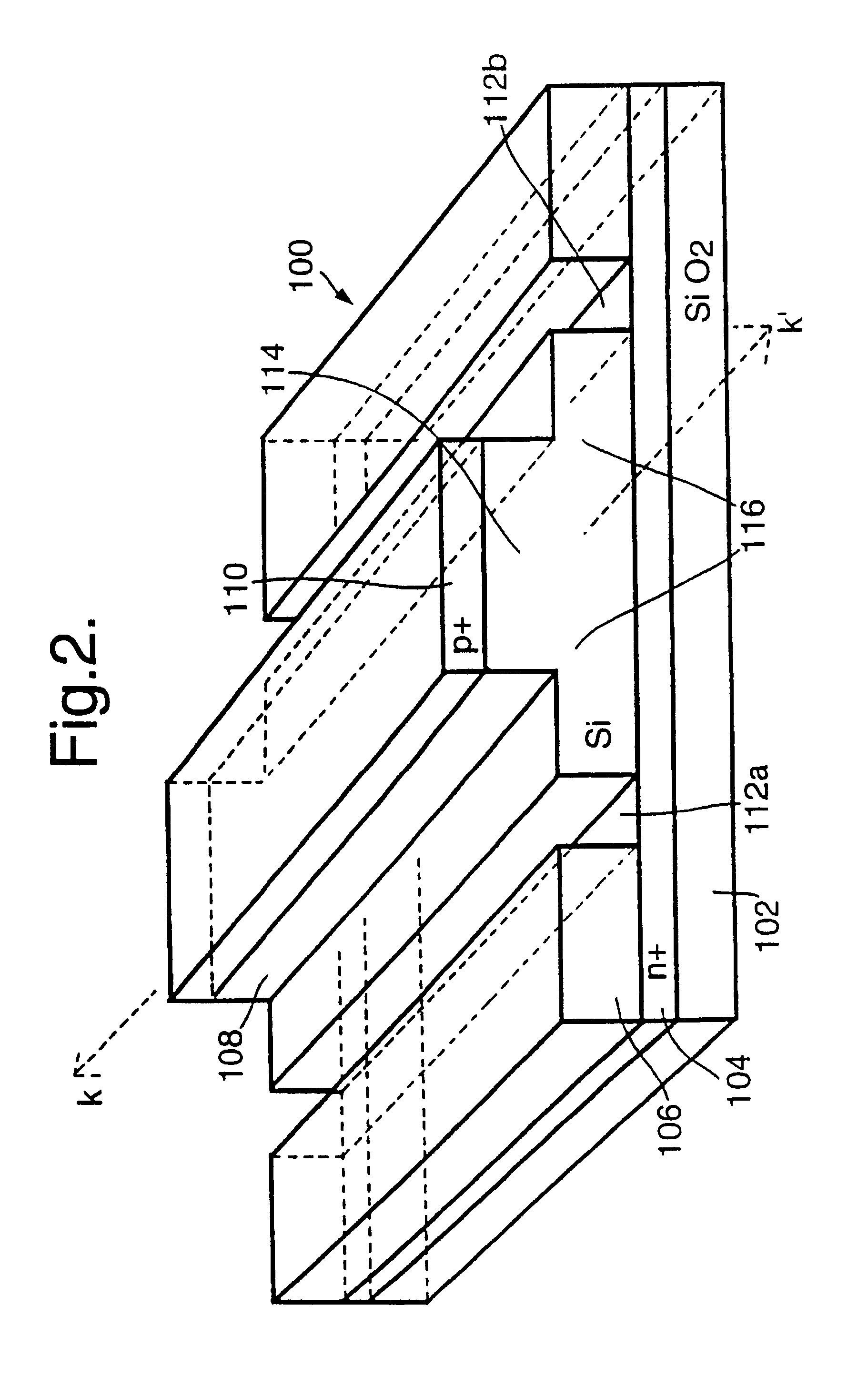High conductivity buried layer in optical waveguide
a technology of optical waveguide and conductivity layer, which is applied in the direction of optical waveguide light guide, instruments, optics, etc., can solve the problems of limited circuit configuration possible for controlling the device, the operation bandwidth of devices relying on the plasma dispersion effect, and the use of a substrate base for one of the electrodes
- Summary
- Abstract
- Description
- Claims
- Application Information
AI Technical Summary
Benefits of technology
Problems solved by technology
Method used
Image
Examples
Embodiment Construction
Referring to FIG. 1, there is shown a schematic view of a prior art plasma dispersion optical modulator device indicated generally by 1. It incorporates in sequence a silicon substrate 2, a silicon dioxide (SiO.sub.2) layer 3 and a silicon surface layer 4. The substrate 2, the silicon dioxide layer 3 and the surface layer 4 are parallel, overlaid and unitary. The surface layer 4 is low doped silicon having an impurity concentration of less than 10.sup.16 atoms cm.sup.-3.
The surface layer 4 is etched back during fabrication of the device 1 to form an exposed rib 6. A reference axis x-x' is included in FIG. 1 and is orientated in a direction along the rib 6. The rib 6 is doped along its upper surface to form an elongate p+ electrode 8 thereonto. An exposed surface of the surface layer 4 is doped to form two elongate n+ electrodes 10a, 10b into the surface layer 4. The n+ electrodes 10a, 10b are adjacent at respective sides of the rib 6 but do not encroach onto it. The p+ electrode 8, ...
PUM
 Login to View More
Login to View More Abstract
Description
Claims
Application Information
 Login to View More
Login to View More - R&D
- Intellectual Property
- Life Sciences
- Materials
- Tech Scout
- Unparalleled Data Quality
- Higher Quality Content
- 60% Fewer Hallucinations
Browse by: Latest US Patents, China's latest patents, Technical Efficacy Thesaurus, Application Domain, Technology Topic, Popular Technical Reports.
© 2025 PatSnap. All rights reserved.Legal|Privacy policy|Modern Slavery Act Transparency Statement|Sitemap|About US| Contact US: help@patsnap.com



